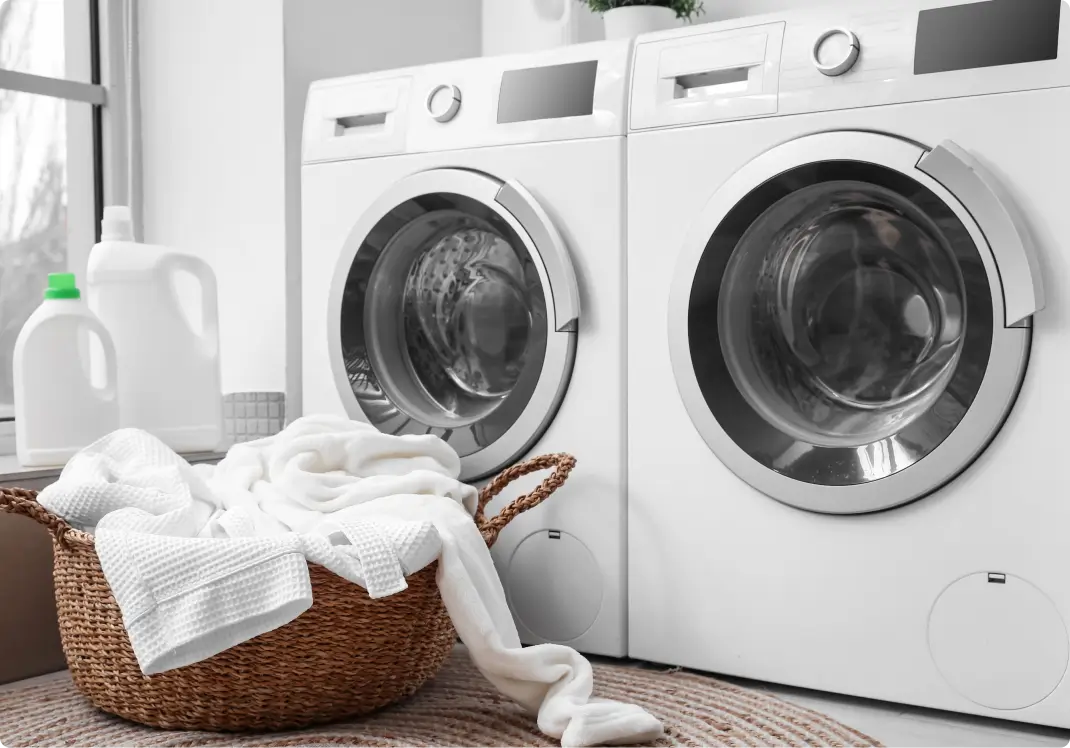If your washer smells bad, doing laundry can quickly turn into an unpleasant chore. A smelly washer not only affects your laundry but can also indicate underlying maintenance issues. Fortunately, identifying and fixing the source of the odor is straightforward. Here’s a guide to troubleshooting and eliminating bad smells in your washer before contacting an appliance repair expert.
Common Causes of a Smelly Washer
- Mold and Mildew Buildup: Excess moisture in the drum or gasket can create a breeding ground for mold and mildew.
- Clogged Drain or Filter: Lint, detergent residue, and debris can accumulate and emit foul odors.
- Residue from Detergent and Fabric Softener: Excessive detergent or softener can build up inside the washer, trapping bacteria and odors.
- Dirty Door Gasket (Front-Load Washers): The rubber gasket around the door often traps water, lint, and detergent residue.
- Standing Water: Poor drainage can leave water stagnant in the drum or hoses, leading to odors.
- Sewer Smell from Drain: A poorly sealed or clogged drain pipe can allow sewer gases to escape into your washer.
Step-by-Step Troubleshooting Guide
1. Clean the Drum
- Run a Cleaning Cycle: Use a washer cleaner or a mixture of white vinegar and baking soda. Run the washer on the hottest cycle.
- Wipe the Drum: After the cycle, wipe the inside of the drum with a damp cloth.
2. Check and Clean the Door Gasket (For Front-Load Washers)
- Inspect for Mold and Debris: Pull back the rubber gasket to check for trapped lint, water, or mold.
- Clean Thoroughly: Use a mixture of warm water and mild detergent or vinegar to scrub the gasket.
3. Clean the Detergent Drawer
- Remove the Drawer: Take out the detergent drawer and rinse it under warm water.
- Scrub Residue: Use a toothbrush to remove detergent buildup from the compartments.
4. Clear the Drain and Filter
- Locate the Drain Filter: Consult your washer’s manual to find the filter, typically at the bottom front panel.
- Remove and Clean: Take out the filter and remove any lint or debris.
- Flush the Drain Hose: Disconnect and flush the hose with water to remove clogs.
5. Improve Drainage
- Inspect the Drain Pipe: Ensure the washer’s drain hose is properly connected and not clogged.
- Seal Gaps: Use a sealant or plumber’s tape to secure the connection and prevent sewer gases.
6. Use Proper Laundry Practices
- Avoid Overloading: Overloading can prevent water from draining properly, leaving residue behind.
- Use the Right Detergent: High-efficiency washers require HE detergent to prevent buildup.
- Leave the Door Open: Allow the drum to dry out after each use to prevent moisture buildup.
Preventative Maintenance Tips
- Run Monthly Cleaning Cycles: Regularly clean your washer with a washer cleaner or vinegar.
- Dry the Gasket After Every Use: Wipe down the gasket to remove excess moisture.
- Measure Detergent Carefully: Use only the recommended amount of detergent for your machine.
- Inspect the Drain Filter Regularly: Clean the filter every few months to prevent clogs.
When to Get Professional Help
If you tried these steps and the odor still hasn’t gone away, then perhaps it would wise to seek help from a professional washer repair company. Bad odor may be signs of more serious things that need the help of a professional for instance mold located in hard to reach areas of the washing machine or plumbing.
Final Thoughts
One of the most common problems of a washing machine that can be solved quite easily is odor. Through detection of the cause of the smell and regular followup of maintenance, you can ensure that your washing machine i’s clean, smelling nice and ready to take on any dirty clothes. Regular maintenance of your washing machine will remove any odors and will extend the life of the appliance.
